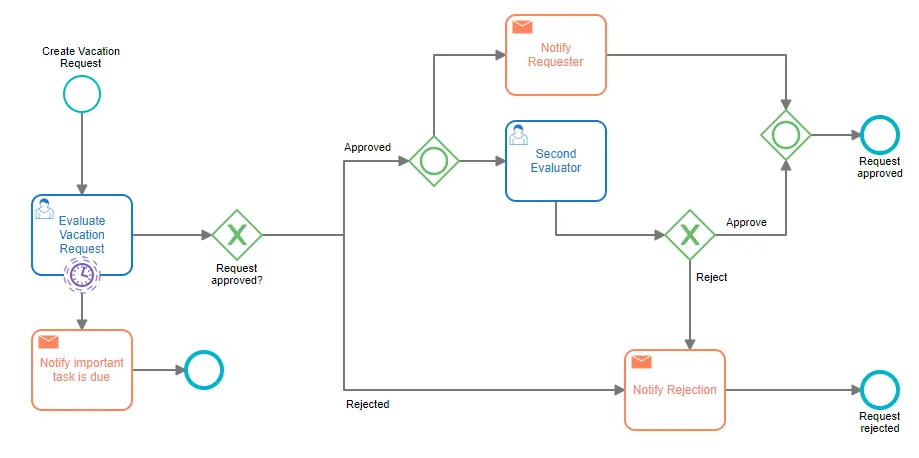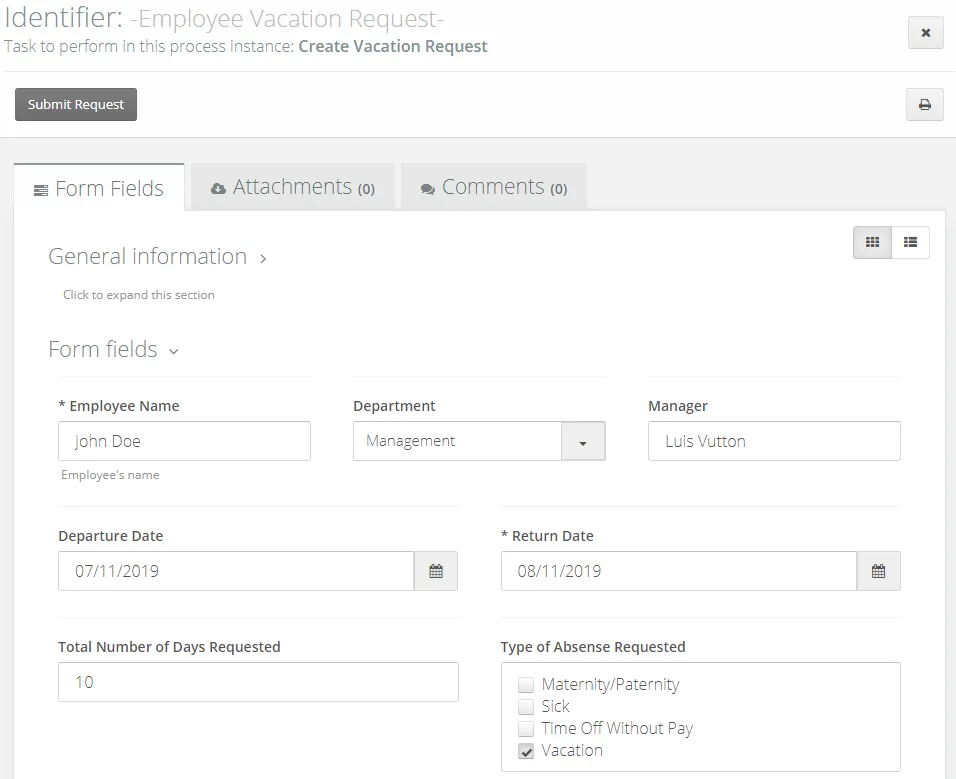Low-code / no-code Workflow & BPM platforms give IT a breath
Blog: Flokzu
Low-code / no-code means that it is not necessary to program (code) to build a new software application. In particular, the low-code / no-code workflow and BPM platforms allow you to automate business processes and workflows completely without programming skills.
On the other hand, software development teams, and information technology (IT) units in general, are subject to great pressure and have very little time available.
The Perfect Storm: Business units need to improve their efficiency and automate their internal processes, IT has no resources available to help them.
That’s when business units decide to evaluate low-code / no-code workflow and BPM platforms. They find that they are able to model, deploy and start using automated processes in very little time. Without depending on IT.
This independence also allows them to react more quickly to market, regulatory or internal changes. Business users model their own processes, so they can modify and adapt them themselves.
In short, low-code / no-code platforms make it easy for business users to create applications themselves, without programming, and without requiring IT department involvement.
Let’s take a closer look at how they do it.
Low-code / no-code: What’s in it?
The most prominent benefit of low-code and no-code is that these platforms take care of so much of the technical work for you. There are also relevant additional benefits:
- Agility: allow to build and evolve applications in less time. Thus, the organization can respond more quickly to internal or external needs.
- Cost reduction, by using fewer hours of usually expensive profiles such as software developers.
- Greater productivity, as more applications can be built per unit of time.
- It improves the customer experience, since they no longer have to wait months for the new application, and the improvements are also implemented much faster.
- Lower risk of failure, since applications are prototyped and validated faster, deviations can be detected in time. Corrections are also less expensive.
- Ease of change. Since you don’t code, making changes is faster and easy.
- Faster digital transformation, implementing new digital applications in less time with easier adoption.
Low-code and no-code processes
There is a particular niche in the low-code and no-code world: specific platforms for workflow and business process management (BPM).
Workflow and BPM low-code and non-code platforms have three fundamental pillars, which allow automating complete processes without programming:
- Defining the structure to store data.
- Drawing the process flow in an appropriate notation.
- Deploying the process and go into production in 1 click.
Store data without coding.
Every business process has associated data, which it is important to store. As an example, a vacation approval workflow should store who is the applicant, the departure date, the return date, etc..
Powerful low-code / no-code Workflow and BPM tools provide a form generator. This tool allows you to drag and drop the different fields into a form, which will centralize all relevant information.

Business users can see how the form looks like, and if they want they can try it. Since they know best the needs of the business, they can better adapt the form to those who will actually use it.
Draw, without programming, the flowchart.
The next step is to define the workflow (process flowchart). Since the historical flow diagrams, graphical notations to do it, have evolved a lot. Currently, the international standard is BPMN (from the OMG). This standard has a great advantage: it is super simple, but at the same time super complete.
Low-code / no-code workflow and BPM platforms allow a business user to draw their process. This way, you can specify a process in minutes, and leave it clearly documented.
Continuing with the example of the vacation request, your BPMN diagram could be:

Go into production in one click.
This maneuver can generate fear, due to its perceived technical difficulty and impact. Low-code / no-code platforms greatly facilitate this maneuver. Basically, they allow that pressing a single button, the process is deployed and made available for end-users.
Of course, for this to happen, the platform must solve all the complexity in a transparent way. It will have to generate the internal structure to store the data, interpret the process diagram, check the permissions, etc.
But in the eyes of the business user, all he has to do is press a button to “Deploy the Process”, and then use it. That’s the magic of low-code and no-code process tools.
To finish the example of the vacation request process, once deployed, employees will be able to initiate requests via a web or mobile application:

IT Collaboration and Independence
There are several objective reports, showing that organizations’ IT departments are overstretched. They have more requirements and projects than resources to address them. By way of example, this report says:
Nearly 40 percent of office workers believe their IT department is too inundated to respond to their specific requests in a timely manner, according to a Harris Poll survey of more than 700 American office workers.
In this critical context, the fact that a business unit can build its own applications, without IT department resources, is a very good sign.
We have seen many cases, where IT is limited to a brief analysis and give the go-ahead, for business users to adopt a low-code workflow and BPM platform.
In these scenarios, there is remarkable collaboration and synergy, as the business user achieves the agility and autonomy they require, while IT allows that need to be met without compromising its scarce resources.
What if programming is required?
There are particular situations that require programming and the IT department must be involved. Some business processes are so complex that they require coding a certain logic or behavior. They can be calculations, connection with old systems, conditional validations, etc.
In these cases, the recommended practice is to encapsulate the programming in a Web Service. And then, simply include that Web Service in the process, as one more box of the flow (example here).
This modality is called encapsulation. The necessary code is encapsulated in a Web Service, and then, this Web Service is used as part of the process.
Of course, programming this Web Service requires technical knowledge. The important thing is that the low-code / no-code Workflow and BPM tool has the possibility to incorporate these Web Services, and thus meet the needs of the business.
In short…
Low-code / no-code platforms allow business units to build workflow and BPM applications, without programming.
They solve three problems.
- The storage of relevant process data.
- The flow of the process, using a graphical notation.
- Deployment, going into production with 1 click.
This autonomy generates great benefits. On one hand, the business unit can quickly attend the needs that arise, as well as respond to changes in the market or regulations.
On the other hand, the IT department, which usually already has a lot of work assigned to it, is not overloaded.
Thus, there is a collaborative synergy, in which IT supports, while the business unit builds its applications with autonomy.
At Flokzu, we provide the most complete low-code / no-code platform to create your cloud workflow applications in minutes. We also have a free trial of our Premium service, through which you can create your own apps.
Schedule here to setup a process in 30 minutes, without writing a single line of code  .
.
The post Low-code / no-code Workflow & BPM platforms give IT a breath appeared first on Flokzu | Cloud BPM & Cloud Workflow.

